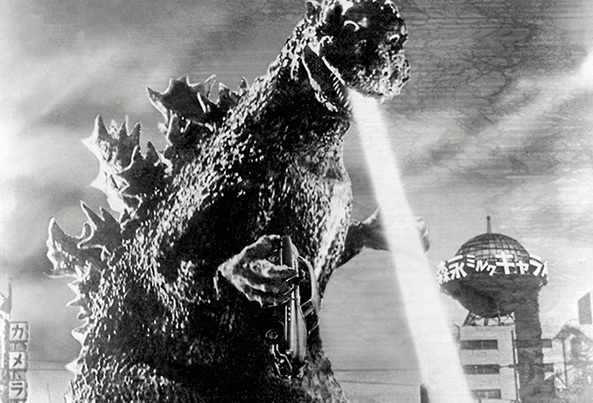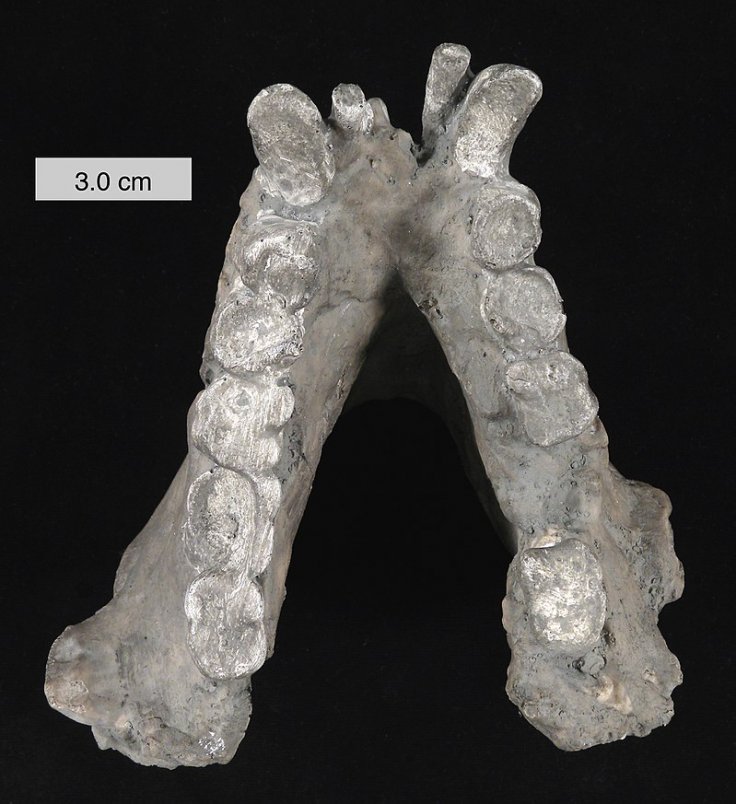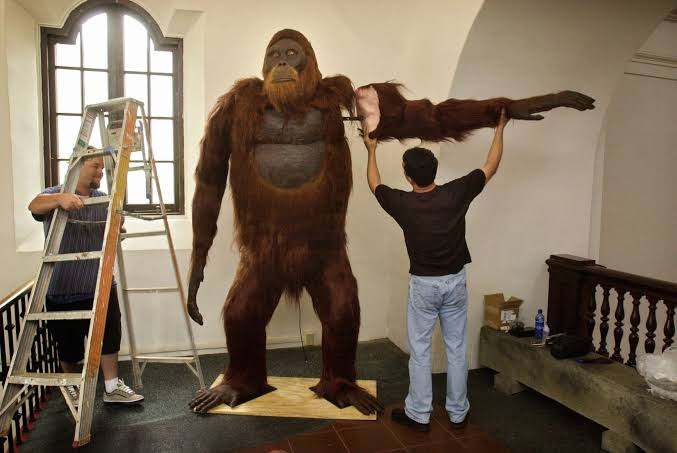
The two million years old giant ape "Giganto" – an extinct species that once inhabited Southeast Asia -- is directly associated with living primate orangutan, researchers said based on genetic material extracted from a 1.9 million-year-old fossil tooth found in southern China in 1935.
The fossil tooth showed the world's largest-known ape was an oversized cousin of orangutans – a critically endangered species today only found on two islands of Sumatra and Borneo. The new finding will allow researchers, who have succeeded in reconstructing the evolutionary relationship between a two-million-year old giant primate and the living orangutan, to accurately reconstruct animal, including human, evolutionary processes.

The mysterious Gigantopithecus blacki or popularly known as Godzilla, whose fossil remains are so sparse – just a collection of teeth and remnants of several lower jaws, were up to 10 feet (3 meters) tall, making it not only the largest-known ape but the biggest primate of the mammalian group that includes lemurs, monkeys, apes, and humans.
The fossil evidence of Gigantopithecus was initially discovered in southern China in 1935, with dozens of teeth and a few partial jaws of the species later found in several spots in southern China, Vietnam and even India. Researchers said there was no skull or postcranial skeleton found of the mysterious animal that lived near huge swaths of grassland.
"Our data, for the first time, provides independent molecular evidence that the closest living relative of Gigantopithecus is the modern orangutan," explained lead researcher Frido Welker, a University of Copenhagen molecular anthropologist. "Not only do proteins survive, but they survive in sufficient quantities to enable resolving the evolutionary relationships between Giganto and extant great apes," Welker stressed in the findings published in the journal Nature.
Paleoanthropologist and study co-author Wei Wang from Shandong University in China said the orangutan and Gigantopithecus evolutionary lineages split about 12 million years ago, and that the creature's origin and evolution had puzzled paleoanthropologists for more than half a century.

He added that it was the first time that genetic material this old had been recovered from a fossil found in a warm, humid environment – conditions usually inhospitable to such preservation, and expressed hope the same technique could be used on other fossils, perhaps including species in the human evolutionary lineage.
Wang said Gigantopithecus may have had an orangutan-like appearance and most likely was a ground-dweller, unlike orangutans, which spend most of their time in trees. Judging from the cavities seen in the fossil teeth, Wang said that Gigantopithecus, which extinct about 300,000 years ago for reasons not fully understood, likely had a plant-based diet, perhaps eating sweet foods like fruit in forested environments.
Wang said human species Homo sapiens first appeared about 300,000 years ago in Africa, only later reaching Southeast Asia, and it was unlikely the two species met. He said there was no evidence of other now-extinct human species playing a role in the Gigantopithecus demise and blamed climate and environmental changes for the extinction of the primate up to 600 kg heavy.
According to Welker, the supposed ancestors of Homo Sapiens are also mainly found in subtropical areas, which means we can potentially retrieve similar information on the evolutionary line leading to humans.
Enrico Cappellini, associate Professor at the Globe Institute, said by sequencing proteins retrieved from dental enamel about two million years old, researchers had demonstrated it was possible to confidently reconstruct the evolutionary relationships of animal species that went extinct too far away in time for their DNA to survive till now.
Herve Bocherens, a researcher at Tübingen University in Germany, in a study published in journal Science Direct explained the largest creature went extinct because in the changed climate its size had become a fatal handicap.









